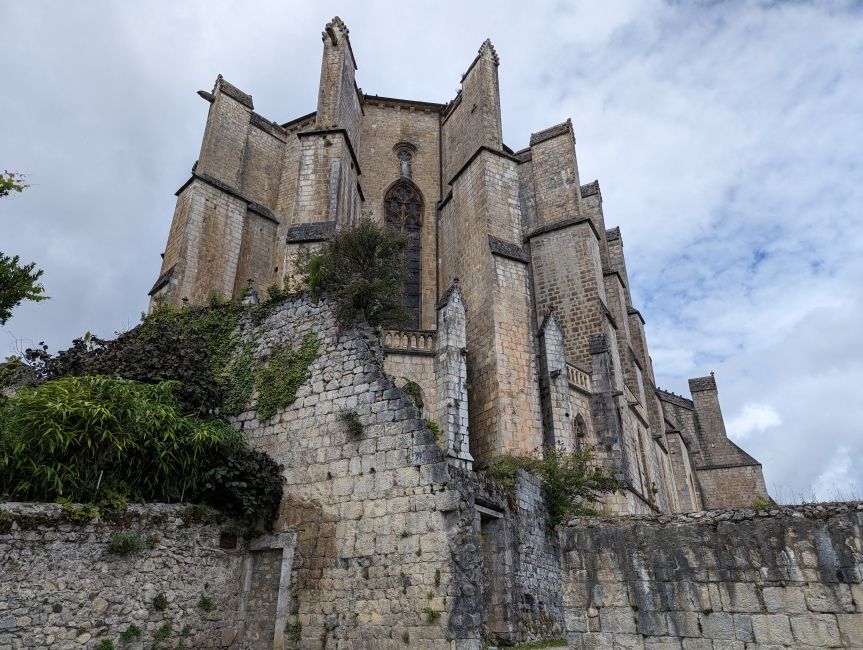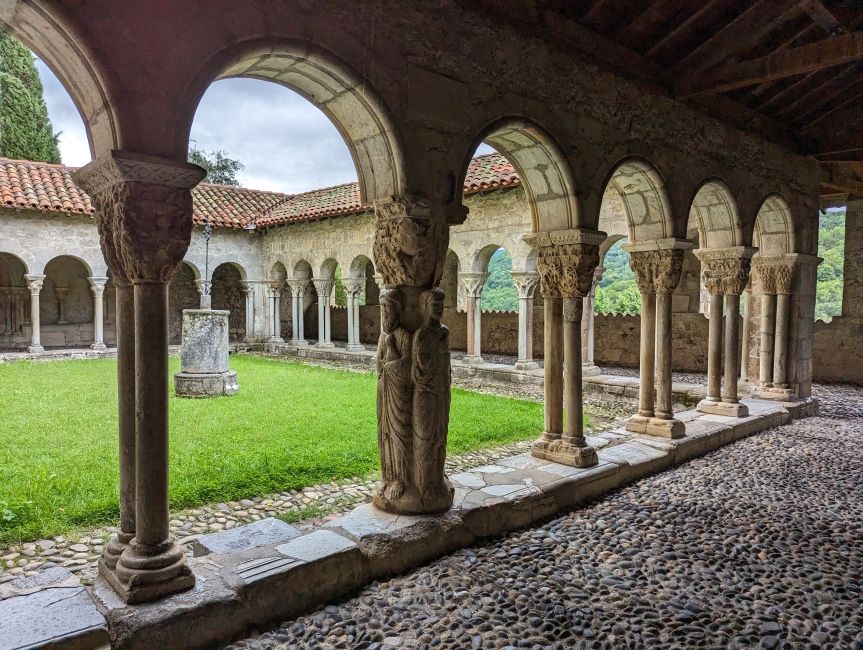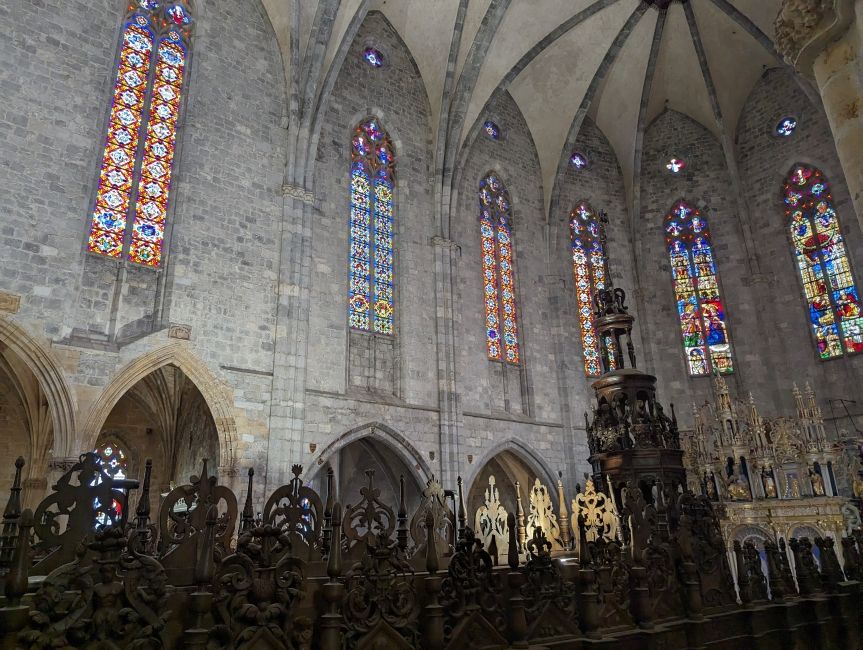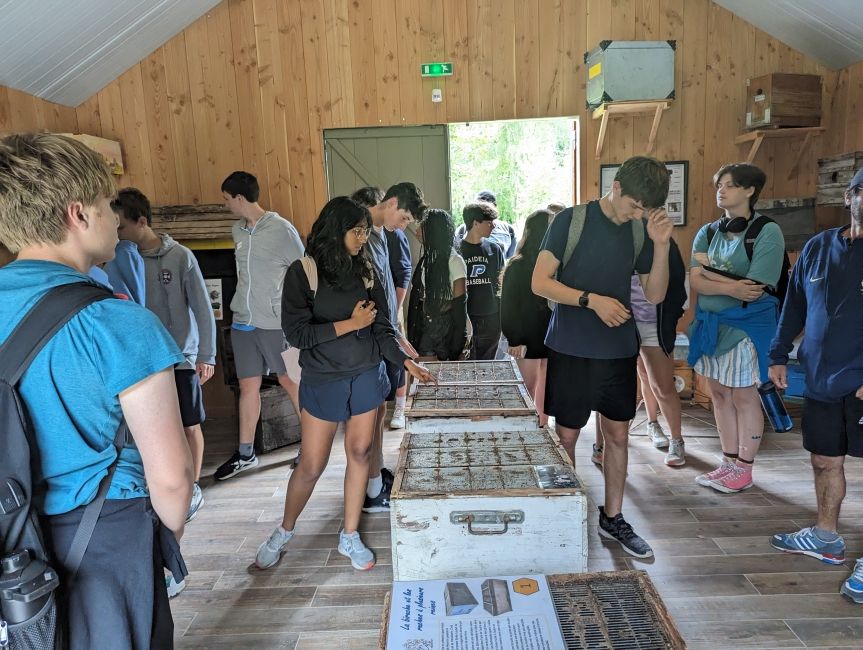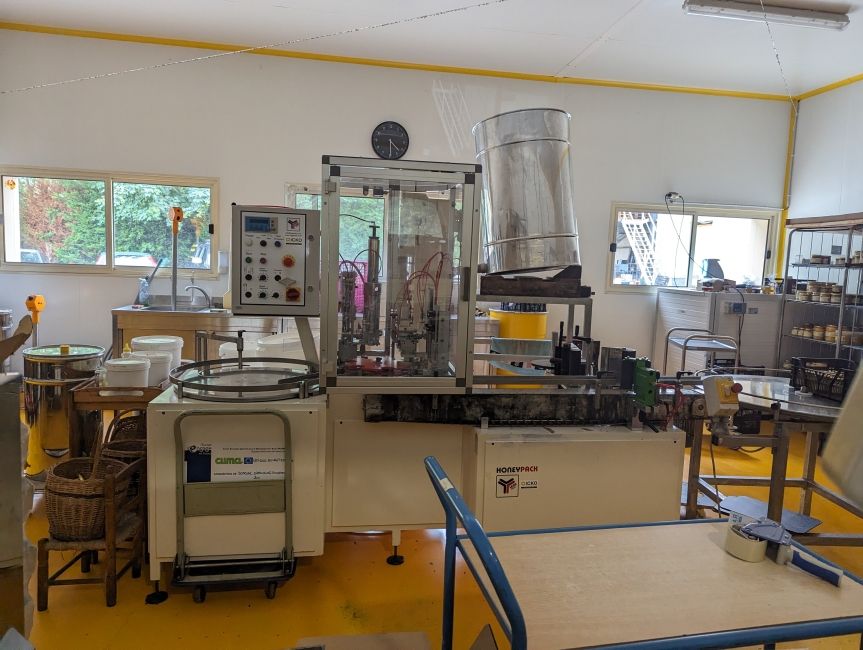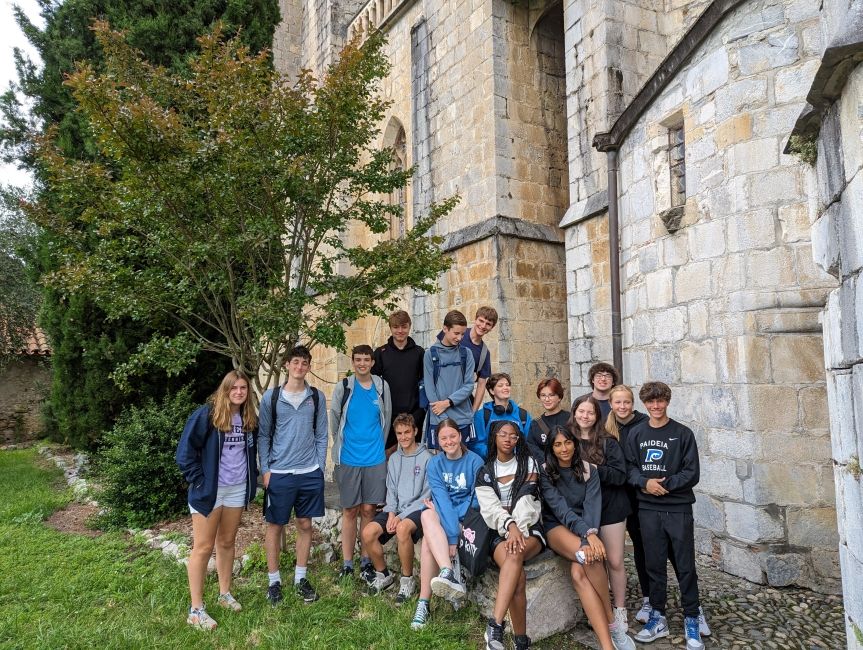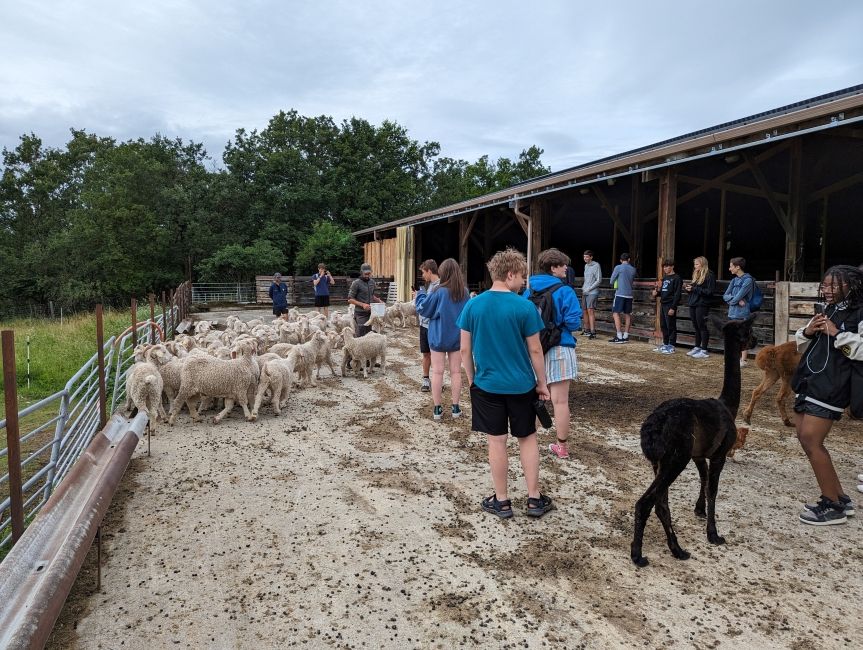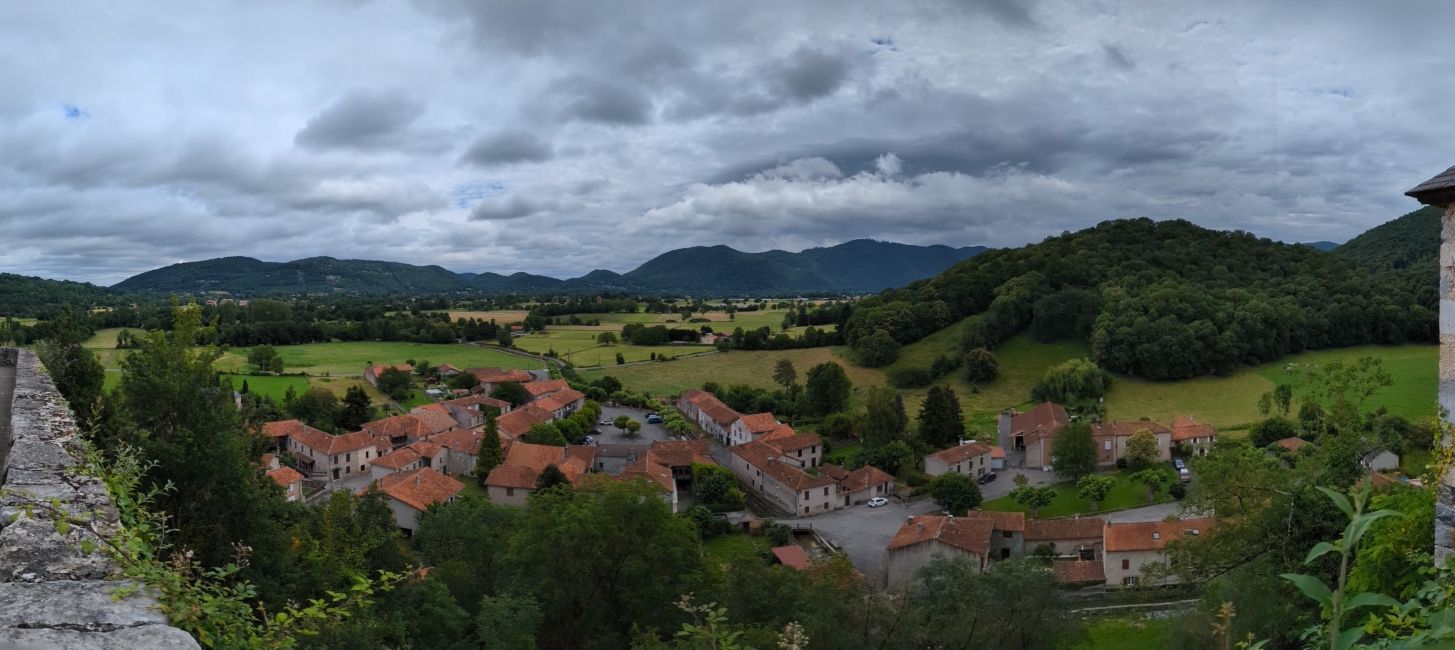An Excursion into the Countryside
Faced with the hustle and bustle of the big city, it's good to sometimes go out into the countryside and experience life in a more relaxed way. In this sense, our Saturday excursion was all about a mountain lifestyle in the foothills of the Pyrenees mountains.
The day began with a short trip to a farm with a few dogs, a couple of alpacas, and a LOT of sheep. Although a detour from our original destination, the host was very friendly and showed us his flock. When we left, his well-trained dogs herded the sheep quickly and efficiently back into their pen - very impressive! The farm itself was a mile or so down the road from the point at which our bus could drive, which allowed us to have a gorgeous hike among the rolling hills with some amazing weather and even better views of the Pyrenees off in the distance.
We then were off to our next destination: Saint-Bertrand-de-Comminges, a very small village on the top of a hill. After some time exploring this medieval village with its winding streets on our own and having a picnic lunch, we went on a guided tour to learn more. We learned that although the village only has around 250 inhabitants now, in Roman times, it used to have thousands. In fact, there are ruins from these times that are being excavated, some findings of which are exhibited at a museum in the town. At the center of the village is a huge cathedral which towers above the otherwise modest buildings, and can be seen from quite some distance. It really is the centerpiece of this otherwise quaint village, and is such a contrast in size to everything else, it makes for a breathtaking sight.
On the tour we first saw the cloister outside of the cathedral, which was a serene area for the monks to pray. Aside from the peaceful interior, it also offered us a gorgeous view of the nearby hills. We then entered the cathedral, which has a soaring interior and incredibly intricate wooden carved choir. This choir allowed the monks a separate area to peacefully hold mass from the edges of the cathedral which were used by many pilgrims. The cathedral also holds the tomb of Saint Bertrand, its namesake.
Our final stop for the day was a honey museum and factory! We arrived at the museum, ran by the third generation of beekeepers (and fourth in training!), which details the honey production process and exhibited a collection of all bee-related items. Touring through a variety of buildings, we saw everything ranging from beehives from around the world to the machines that used to be used for honey extraction in the past. It was really interesting to learn about the production process, and amazing at the scale that this factory (or should I call it a farm?) works at. They own around 1,000 beehives, each hive housing around 100,000 bees. You can do the math - that's roughly 100 million bees that they take care of! Every month, the hives are collected, honey is extracted, and then moved to a different location for the bees to pollinate and produce more honey. At the end, we saw the machinery and equipment they use in today's production. The the tour finished in their shop, where we were able to sample the many different kinds of honey and honey products they make. My favorite was the honey-hazelnut spread, although I'm partial to anything hazelnut, so that was no surprise!
Overall, our day was an amazing peek into the life of different people who live in the shadows of the Pyrenees mountains. It was certainly in constrast with most of the other days we have experienced, and taught me a lot about the different people we met. I look forward to eating some of the honey I bought and thinking about all of the thousands of bees that helped bring it to me!
Related Posts
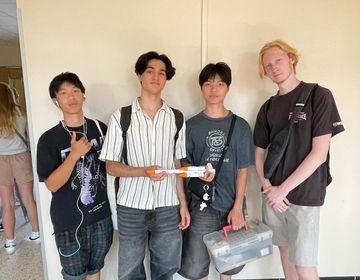
Au revoir Toulouse!
This morning, Session II Aerospace Engineering students departed with hearts overflowing with joy and memories to treasure for a lifetime! As the sun rose, the excitement in the air was... keep reading
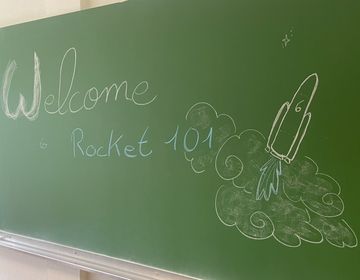
Exploring Aerospace Engineering in Toulouse, France
Toulouse, France is often called the aerospace capital or “Space City” of Europe, and for good reason. Home to major aerospace companies like Airbus and renowned research institutions, this city... keep reading
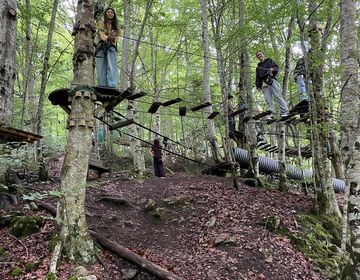
Akrobranch in the Pyrénées
Toe-tapping on wires 40 feet above thundering waterfalls in the foothills of the Pyrénées mountains... music to the ears of the CIEE Aerospace Engineering crew! This past weekend the students... keep reading
